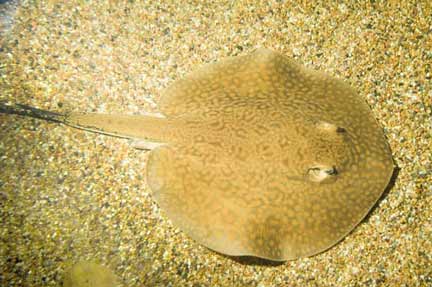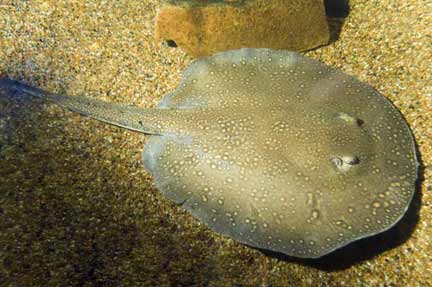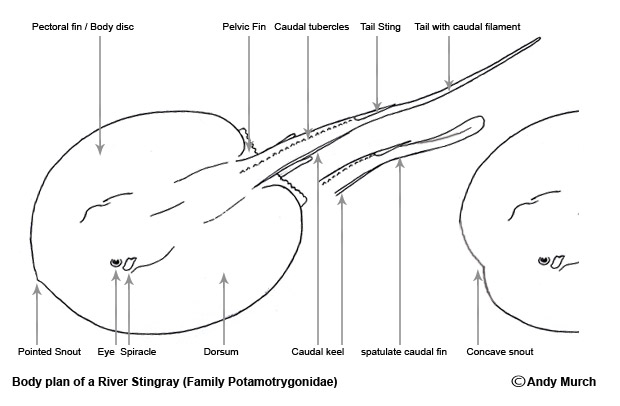|
|
|
SHARK INFO |
|
SHARK |
|
SHARK EVOLUTION |
|
|
|
SHARK DIVING |
|
SHARK DIVING 101 |
|
|
|
CONSERVATION |
|
|
|
PHOTOGRAPHY |
|
SHARK PHOTO TIPS |
|
|
|
RESOURCES |
|
|
|
WEB STUFF |
|
WHAT IS ELASMODIVER? Not just a huge collection of Shark Pictures: Elasmodiver.com contains images of sharks, skates, rays, and a few chimaera's from around the world. Elasmodiver began as a simple web based shark field guide to help divers find the best places to encounter the different species of sharks and rays that live in shallow water but it has slowly evolved into a much larger project containing information on all aspects of shark diving and shark photography. There are now more than 10,000 shark pictures and sections on shark evolution, biology, and conservation. There is a large library of reviewed shark books, a constantly updated shark taxonomy page, a monster list of shark links, and deeper in the site there are numerous articles and stories about shark encounters. Elasmodiver is now so difficult to check for updates, that new information and pictures are listed on an Elasmodiver Updates Page that can be accessed here:
|
|
_ |
River Stingrays |
|
River Stingrays: Two color morphs of Potamotrygon castexi
River Stingrays The family Potamotrygonidae which is commonly referred to as the River Stingrays is in dire need of revision. There are presently 3 valid genera a one that has not been scientifically described but contains a ray that is visibly different enough to warrant a separate classification. There are at least 22 species although identification is extremely difficult in this unusual family group. Below is a key to the genera of River Stingrays:
Identifying Individual Species
If you though identifying marine stingrays was difficult, try determining
the exact species of a River Stingray. Body
Although the problem of polychromatism implies that positive i.d. just
from coloration alone is almost impossible, there are species that display
distinct color morphs not shared with any other species. Also, some
characteristics among similar patterned species are more telling than it
would at first appear. For example, Potamotrygon castexi can
exhibit a large variety of patterns but they tend to fit within a certain
range that blend into each other. When these patterns are considered along
with other characteristics it often becomes possible to narrow down the
species with reasonable certainty.
To help classify River Stingrays that are traded among aquarists, a more
detailed (but also more subjective) classification system has been
developed that splits up the recognized species into their various color
morphs. In this system, our example P.castexi is further split by
appearance into Jaguar Ray, Estrella Ray, etc. but although this works for
aquarists it is difficult to follow when translated between languages as
it does not have a universal Latinized equivalent and it serves no real
purpose to taxonomists unless two morphs are eventually identified as
separate species.
Once the genera has been ascertained, the best key to species
identification (apart from DNA testing) is the markings on and shape of
the tail.
Habitat and Geographic Distribution
River Stingrays are distributed throughout most of the tropical river
systems of South America. They comprise the only elasmobranch group that
is completely adapted to living exclusively in fresh water.
Brazil contains the greatest number of species (around 18) but
potamotrygonid rays can also be found in Argentina, Bolivia, Columbia,
Ecuador, French Guyana, Guyana, Paraguay, Peru, Surinam, Uruguay, and
Venezuela. P.motoro which is the most common River Stingray has
been reported from all of these countries except Ecuador.
River Stingrays can be found in rivers with sand, mud, or stony bottoms.
During the rainy season they also move into areas of flooded forest.
River Stingrays spend a percentage of their time buried under the sand or
mud with just their eyes protruding.
Freshwater Modifications
River Stingrays have developed permanent modifications to adapt to the
freshwater environment that they are confined to. One significant
modification is the degeneration of the rectal gland that serves in the
excretion of excess salt in marine elasmobranches. Salt water rays also
have the ability to retain high levels of urea in their blood which
counters the osmotic flow of fluids through their skin into the salt rich
water. River Stingrays have lost this characteristic resulting in an
inability to tolerate environments with a salinity greater than 3 ppt.
The electroreceptive ampullae of Lorenzini among River Stingrays is also
modified to operate in freshwater.
Reproduction
River Stingrays practice a style of reproduction known as matrotrophic
viviparity. Villi (umbilical filaments) are formed that nourish the
fetuses while in the uterus. The reproductive cycle has been shown to
coincide with hydrological changes in the rays environment. Gestation can
last between 3-12 months with 1-8 embryos in gestation at one time.
Diet
River Stingrays eat a wide variety of available foods from worms to insect
larvae, shrimp and other tiny crustaceans, and small fishes. Most of their
food is located in the sediment and literally sucked in. Their tooth
structure like other stingrays consists of small rounded molars that form
a flat upper and lower surface designed to grip but not cut.
Defensive Mechanisms and Treatment of Stingray
Wounds
River Stingrays carry one or more stingers or tail spines on the
top of their tails. This weapon is capable of puncturing the hide of a menacing
predator or impaling the leg or abdomen of a wading fisherman. It is sheathed in a mildly venomous covering of skin which is
pushed back as the point enters the victim allowing the venom to come in
contact with the cut tissue. Wounds inflicted by these stingers are
apparently very painful but the toxins can be broken down quickly with
heat. Treatment of a stingray wound should involve immersing the affected
area in water as hot as the victim can tolerate. The wound should also be
irrigated to ensure that no part of the spine has broken off. Infections
are common and where medical attention is not readily available River Stingray wounds
have resulted in fatalities. In the Amazon the River Stingray is highly
feared among the natives that work along the river.
The Aquarium Trade
For the most part River Stingrays are at the top of the food web
especially far up river where Bull Sharks are less likely to penetrate.
The greatest threat that they face is removal by collectors for export
into the aquarium trade. This has become a major problem but recently
exports from Brazil were halted while a quota system is implemented.
Fortunately for the stingrays, their cryptic appearance has led to so much
difficulty identifying specific species that none can be exported until a
better i.d. system is figured out. As DNA testing for aquarium collectors
is impractical it may be many years before this hurdle is overcome. Under
the right conditions River Stingrays will mate in captivity and many
animals for sale now come from captive breeding programs. Interestingly,
because species from different geographic regions are often housed
together this has led to even more hybrids joining the melting pot.
Locomotion
River Stingrays are able to swim forwards (and slowly backwards) by
undulating their pectoral fins that form their body disc. See:
Elasmobranch Locomotion. Their
tails with their rudimentary caudal fins are used for steering and balance
and also to support their defensive tail stings.
Breathing
River Stingrays spend a percentage of their time buried with just
their eyes showing. Their mouths and gills (like almost all rays) are
positioned under their bodies which makes breathing while on the sand
rather challenging. To overcome this hurdle they have developed large
spiracles (spiracles are the openings positioned just behind the eyes
through which a shark or ray can suck in oxygen rich water to flush over
the gills). Through this mechanism River Stingrays are able to remain
motionless for hours at a time.
River Stingray Evolution
It is unclear which group of marine rays the Potamotrygonidae evolved from
but there are two main theories:
It was initially thought that an invading species of himantura (one of the
whiptail stingray genuses) colonized the Amazon Basin from the Atlantic
(Garman, 1913, Bigalow and Schroeder, 1953). Geographically this makes
sense because the sprawling mouth of the Amazon is unprotected by rapids
or other features that would protect it from invasion. Whiptail stingrays
are also commonly found in estuarine environments and are euryhaline -
able to tolerate fresh water for long periods.
The second theory based on parasitological evidence has River Stingrays
evolving from the Urolophidae (a family of round stingrays confined to the
Pacific) that were trapped during the creation of the Isthmus of Panama
(Brooks et al., 1981). Parasitological evidence (comparative
analysis of the parasites living in the gut and other areas with the body
of an animal) is considered to be quite significant in evolutionary terms
but apart from this characteristic River Stingrays have little in common
with Round Stingrays as the latter are confined to saltwater environments.
Instead, an Indo-west Pacific Whiptail Stingray (Taeniura lymma or one of
its predecessors) may be the most likely ancestor of the River
Stingray.
|
























